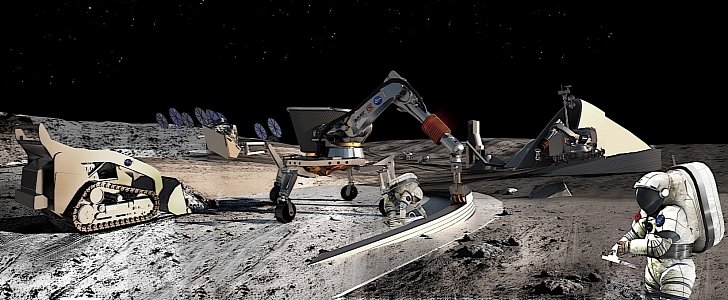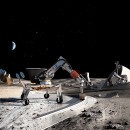At the rate space exploration plans are being drawn, it is obvious humans will be visiting another world during our lifetime. The next logical step would be to learn how to use available resources for experiments and ultimately to build ourselves a home away from home.
As part of its long term plans, NASA is now looking to create new autonomous machines that would help astronauts conduct their business off-world. Through the Space Robotics Challenge announced in August, the American space agency has opened the doors to all those interested (public, industry, and academia) to come up with fresh ideas.
The program is now in its second phase and calls for the creation of a software that would govern a team of virtual robots that are to be used for in-situ resource utilization (ISRU) on the Moon. That essentially means a hunter-gatherer robot that could pick up materials found locally, needed for whatever experiment or construction project the astronauts will be conducting.
The competition is open to teams from all over the world. Each of the them will have to complete three challenges "within a simulation representing a capability needed to execute an autonomous ISRU mission."
Of those who sign up, the top 25 teams will go into the next stage and awarded $375,000.
This next stage will require a demonstration of robots using the proven software during a long-term ISRU mission. An extra $625,000 will go to the top 10 teams who manage to pass the tests.
“We believe the public has ideas that can help us advance the state-of-the-art in autonomous robotic operations on planetary surfaces,” said in a statement Jim Reuter, associate administrator for NASA’s Space Technology Mission Directorate.
“The first phase of this competition demonstrated teams could create sophisticated autonomous software, and this second phase will push teams to pair those capabilities with tasks that will be critical to exploring the Moon and Mars.”
More details on the Space Robotics Challenge can be found at this link.
The program is now in its second phase and calls for the creation of a software that would govern a team of virtual robots that are to be used for in-situ resource utilization (ISRU) on the Moon. That essentially means a hunter-gatherer robot that could pick up materials found locally, needed for whatever experiment or construction project the astronauts will be conducting.
The competition is open to teams from all over the world. Each of the them will have to complete three challenges "within a simulation representing a capability needed to execute an autonomous ISRU mission."
Of those who sign up, the top 25 teams will go into the next stage and awarded $375,000.
This next stage will require a demonstration of robots using the proven software during a long-term ISRU mission. An extra $625,000 will go to the top 10 teams who manage to pass the tests.
“We believe the public has ideas that can help us advance the state-of-the-art in autonomous robotic operations on planetary surfaces,” said in a statement Jim Reuter, associate administrator for NASA’s Space Technology Mission Directorate.
“The first phase of this competition demonstrated teams could create sophisticated autonomous software, and this second phase will push teams to pair those capabilities with tasks that will be critical to exploring the Moon and Mars.”
More details on the Space Robotics Challenge can be found at this link.



